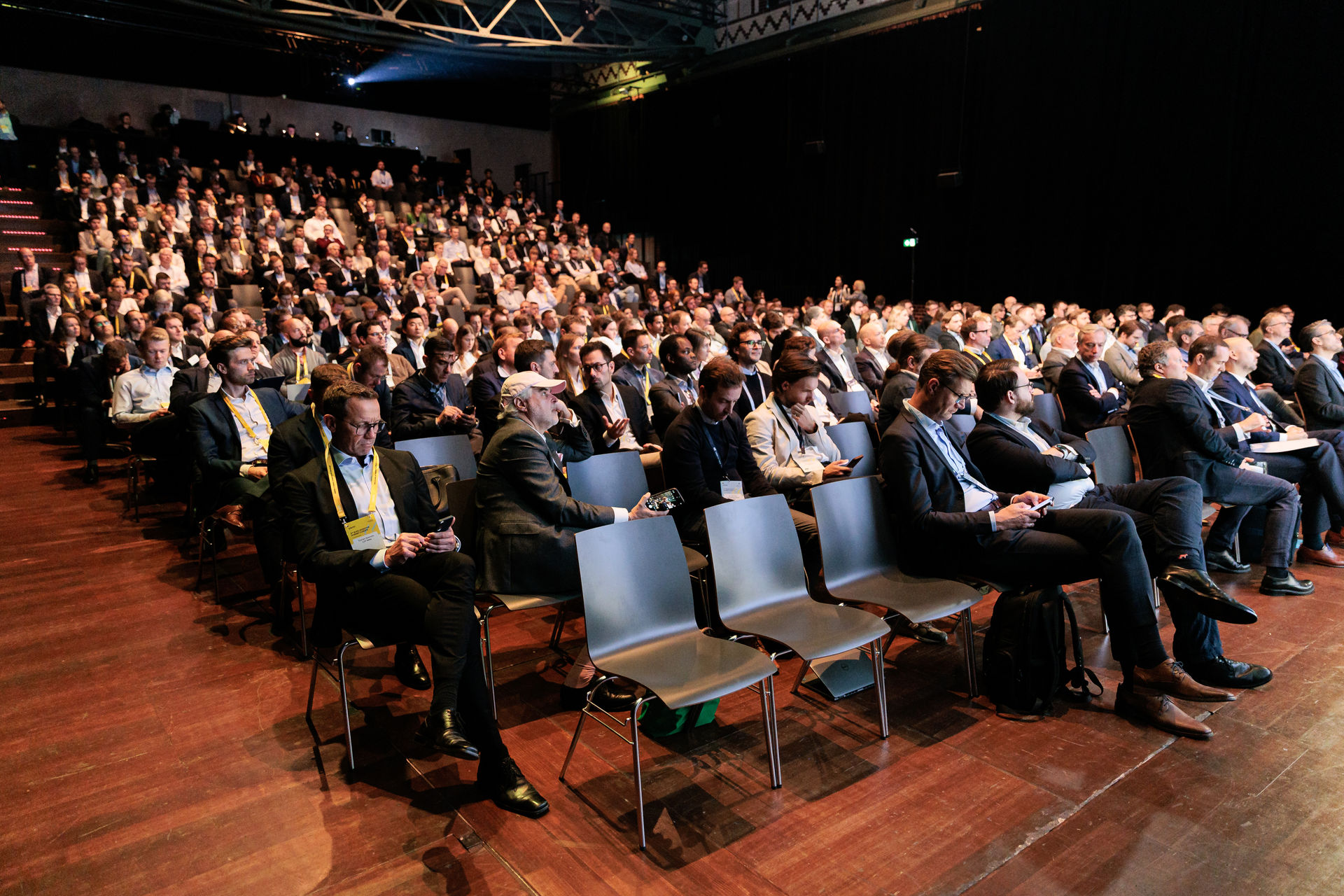Industry
Future-proof or fail: how battery storage projects can thrive in Germany
Germany’s battery storage boom is real but so are the bottlenecks. As capital pours in and gigawatt-hour-scale projects near launch, grid connection delays and regulatory uncertainty are threatening to dampen momentum. At the 3rd BVES Investor Summit in Berlin, more than 500 industry leaders gathered to weigh the hype against the hard realities.

By
Marija Maisch
Oct 22, 2025

Image: BVES
The hype around the German battery storage market continues to build – but so do the challenges, particularly around grid connections. While operational assets are delivering almost unbelievably strong returns and the first gigawatt-hour-scale projects are on the horizon, the vast majority of the 500 GW of projects currently in the grid connection queue will never make it off the ground.
For those that do succeed, future-proof project design is essential. As the market matures, some revenue streams are expected to dry up while new ones emerge. Developers must anticipate these shifts by designing assets with flexibility in mind – ready to adapt to evolving market dynamics and grid needs.
With grid connection bottlenecks worsening, co-location is forecasted to see unprecedented growth, not necessarily because it delivers the best returns today, but because it’s becoming a practical necessity. Amid this rapid evolution, capital is not the problem: investors are actively circling the market, drawn by its scale and momentum. However, they face a different challenge – identifying reliable, knowledgeable partners in a space that is growing faster than its institutional maturity. Today, some developers in Germany label their projects as “ready to build” (RtB) even without a secured grid connection – arguably the most valuable asset in the market.
These themes were front and center at the 3rd Investor Summit of the German Federal Association of Energy Storage Systems (BVES), held on Wednesday in Berlin. The event brought together around 500 participants from across the value chain, underscoring the unprecedented investor interest and strategic importance of the German storage market.
In his opening address, Volker Hild, VP Energy Storage at Siemens Energy, described the current landscape as a “perfect storm” for energy storage – shaped by tech shifts, soaring demand, and geopolitical volatility. With grid access set to remain scarce, he stressed the need for battery energy storage systems (BESS) to be designed for versatile roles, from renewable integration to grid stability services like blckstart and inertia – which will be procured in Germany as of next year. While mechanical inertia won’t vanish entirely, Hild highlighted syncons combined with BESS as a strong revenue-generating setup. He also pointed to BESS paired with gas turbines as a compelling business case, especially for blackstart services.
Hild also cautioned that hybrid systems (e.g., solar + storage or wind + storage) don’t always guarantee strong returns. However, given limited grid access, they often make strategic sense – driven more by necessity than pure economics. A later panel on co-location confirmed that while co-located BESS may not generate standalone revenues, a viable business case still exists. Panelists agreed that colocated BESS will see significantly stronger growth than standalone projects. “Prime sites for large standalone projects are largely taken. From 2026 onward, we expect rapid expansion of colocated BESS. Beyond 2027, growth will shift toward commercial and industrial BESS, as well as vehicle-to-grid adoption,” said Marcus Fendt, Managing Director of The Mobility House.
One of the key questions often raised when discussing the German battery storage market is whether it will follow the same path as the UK. The short answer: no – but there are valuable lessons to be learned.
Speaking at the BVES Investor Summit, Tom Smout, Head of Storage at LCP Delta, reflected on the UK market’s boom-and-bust cycle. During the 2021–2022 peak, some projects achieved over 50% equity returns. But when the market returned in 2025, it did so with an entirely different revenue stack, exposing the risks of building for short-term gains rather than long-term flexibility. “Design your assets for the future – not just a single market,” Smout advised. He stressed the importance of building in optionality – enabling assets to stack multiple value streams such as ancillary services, wholesale arbitrage, and capacity payments.
Smout noted that while market saturation is a valid concern, Germany’s ancillary services market is exceptionally deep. More importantly, its wholesale power market is the largest and most liquid in Europe, offering significant long-term potential. Most projects today operate fully merchant, but unlike in the UK, many German projects benefit from tolling structures that offer a buffer against price downturns. On risk strategy, Smout urged caution: “Hedge only as much as you need – not more. Leave room for merchant upside.” Reacting to downturns with hasty hedging, he warned, often leads to poor outcomes.
Faced with growing grid connection scarcity, some battery storage projects in Germany are now operating under flexible grid connection agreements. In certain cases, these arrangements prohibit storage assets from feeding electricity into the grid during peak hours – typically between 7 a.m. and 4 p.m. – due to local congestion or limited network capacity. According to Smout, such restrictions can reduce a project’s net present value (NPV) of revenues by as much as 22% compared to assets with unrestricted grid access.
Furthermore, Germany’s grid connection saga has reached a new turning point. Namely, the Federal Network Agency (BNetzA) has quietly introduced a major change in its updated FAQs on battery storage grid connections, creating new uncertainty for developers. The agency now states that the KraftNAV regulation – which governs grid connections for generation plants of 100?MW or more on a first-come, first-served basis – applies only to the feed-in side of battery systems. For the withdrawal side, operators must follow the more complex and less predictable procedures under Section 17 of the Energy Industry Act (EnWG). Speaking at the BVES event, Britta Wißmann from the law firm Watson Farley Williams explained that the move has raised fresh concerns about delays and risks in Germany’s booming storage pipeline.
ess-news.com |






